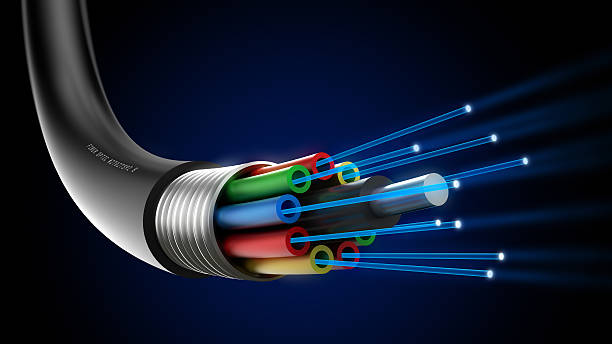In the current digital age, copper cables are a relic of the past, made obsolete by Optical fiber cable manufacturers. Also known as fiber optic cables, these data transmission lines use light as a data transmission mode, benefiting from the speed at which light travels. Copper cables are limited to the speed of electricity transmission and are much slower when compared to optical fiber cables. Fiber optics are always preferred over copper wires globally.
Fiber optic cables
Fiber optic cable manufacturers use glass or fiber. Data transmission in fiber optic cable takes place in the form of light. The three basic components of fiber optic data transmission are:
- Light source: This is the data source to be transmitted across the cable.
- The transmission medium: Usually made up of glass or fiber; the transmission medium carries the light signal from the source to the designated receiver.
- Detector: The signal detector at the receiver’s end is responsible for collecting the data from the optical fiber cable and transferring the data to be decoded into a usable format.
Copper wire
Copper wires are much slower than optical fiber cables due to their dependency on electrical transmission. Copper wires are single solid conductors through which data travels in the form of electrical signals. Global cable suppliers used to prefer fiber optic cables due to their superior speed and safety.
The difference between fiber optic cable and copper wire
Now that we have an introduction to both copper wires and optical fiber, we should discuss the various attributes in which they differ from each other. Although optical fiber cables are usually considered superior, copper wire also has its use cases depending on the requirements. Therefore, it is wise to carefully consider all the strengths and weaknesses of these data transmission cables.
- Bandwidth: This is the most important factor to consider when choosing data transmission. Bandwidth means the maximum data capacity the cable can transfer once in a fixed period. Fiber optic cable offers high bandwidth, whereas copper wires provide low bandwidth. Modern applications such as live video streaming and company-wide local area data-sharing networks require high bandwidth to operate smoothly without buffering and improve latency.
- Structure & Environment: Fiber optic cables are thin, lightweight, and highly resistant to corrosive environments. In contrast, copper cables are thicker, heavier, and more prone to corrosion. This proves that fiber optic cables can be laid in several different environmental conditions and are expected to operate optimally under variable external factors.
- Security:Fiber optic cable manufacturers prefer optical fiber cables for data security. Data is a valuable commodity. Any compromise in data security may cause financial losses for a company and prove to be a national security threat to a government. Copper wires are prone to wire tappers due to data leakage. Fiber optic cables are not prone to data leakage as photons are used for data transmission. This is why wire tappers do not work on fiber optic cables.
Are you looking for the best Fiber optic cable? It’s recommended to go online and search for the best Fiber optic cable company in India to find yourself the right manufacturer.















